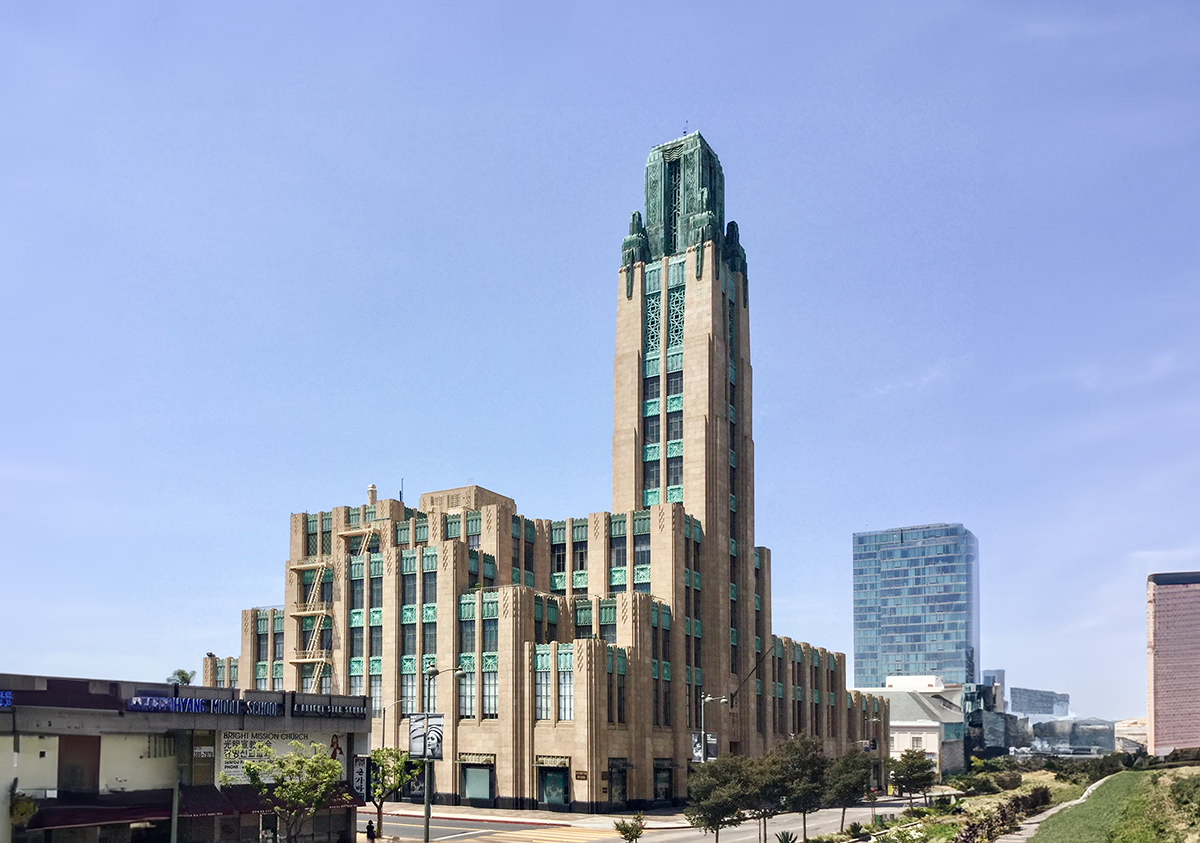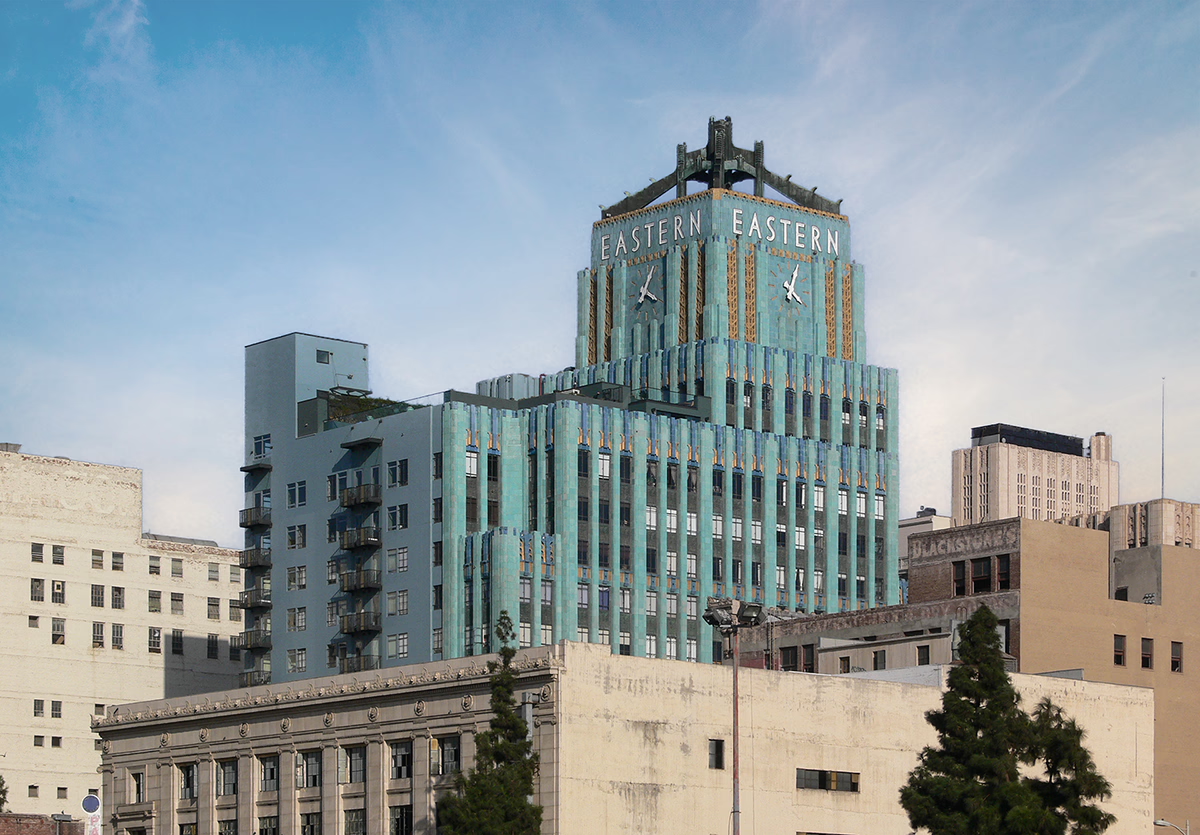Bullocks Wilshire Building vs Eastern Columbia Building


Comparing the Bullocks Wilshire Building and the Eastern Columbia Building is interesting because they both stand in Los Angeles, CA, and were completed just one year apart, but they were designed by different architects.
This offers a unique glimpse at how rival designers approached projects in the same city during the same era.
Height & Size
The Eastern Columbia Building is clearly the larger tower of the two, both in terms of height and number of floors. It rises to 262ft (80m) with 13 floors above ground, while the Bullocks Wilshire Building reaches 240ft (73m) with 12 floors above ground.
Of course, each project may have faced different briefs or regulatory constraints, which we don't really know about and could also explain the outcome.
Architectural Style
Both the Bullocks Wilshire Building and the Eastern Columbia Building were designed in line with the aesthetic conventions of the Art Deco style.
At the time, this style was at the height of its popularity. So both Parkinson & Parkinson and Curlett & Beelman followed what was in many ways expected of them, producing designs that fit comfortably within contemporary architectural norms, rather than breaking with convention.
Uses
The Bullocks Wilshire Building is primarily education, while the Eastern Columbia Building is primarily residential.
However, both of them have shifted purpose since their completion. The Bullocks Wilshire Building evolved from retail to education, while the Eastern Columbia Building moved from retail to residential.
The Eastern Columbia Building offers 147 residential units.
Structure & Facade
These two towers illustrate the many possible ways to combine structure and enclosure in skyscraper design.
| Bullocks Wilshire Building | Eastern Columbia Building | |
|---|---|---|
| Parkinson & Parkinson | Architect | Curlett & Beelman |
| 1928 | Construction Started | 1930 |
| 1929 | Year Completed | 1930 |
| Art Deco | Architectural Style | Art Deco |
| Retail | Original Use | Retail |
| Education | Current Use | Residential |
| 12 | Floors Above Ground | 13 |
| 73 m | Height (m) | 80 m |
| 21,368 m² | Usable Area (m²) | 25,610 m² |
| Frame | Structure Type | Frame |
| Steel | Vertical Structure Material | Reinforced Concrete |
| Concrete | Horizontal Structure Material | Reinforced Concrete |
| No | Facade Structural? | No |
| CA | State | CA |
| Los Angeles | City | Los Angeles |
| 3050 Wilshire Boulevard | Address | 849 S. Broadway |